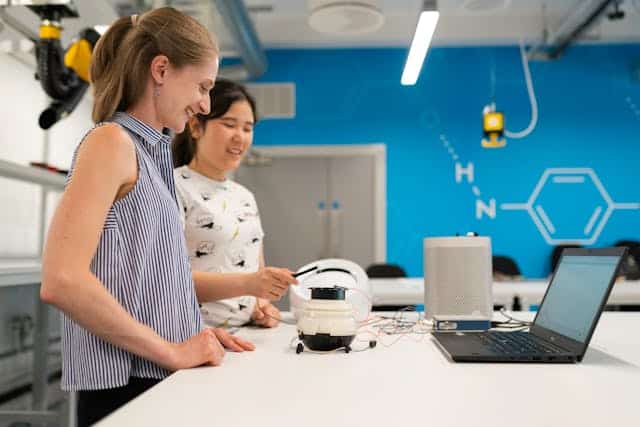Top 10 most common mistakes in the translation of medical documents.

In this article we are going to talk about the top 10 most common mistakes in the translation of medical documents. The translation of medical documents is becoming more and more frequent in the industry as a consequence of globalization and the increasing movement of people for work or tourism.
Both public healthcare systems and private healthcare providers, as well as in the pharmaceutical industry, translating documents into several languages greatly facilitates collaboration between professionals and also with patients.
Within this field, ensuring an accurate translation is essential to avoid personal health and legal problems resulting from poorly translated documents. However, many of these documents are not translated by certified and experienced professional translators and contain some common mistakes that should be avoided.
The following is a list of common errors in medical translation.
1. Lack of experience in the health sector.
This is one of the most common mistakes in the translation of medical documents. Hiring generalist translation companies or using unqualified in-house professionals to translate documents is a serious mistake. Lack of experience in medical terminology can lead to significant errors. Medical translators must be experienced in the medical terminology of both the source and target languages.
We often come across documents that have used terminology that is incorrect for the context in which it is being used or for the intended audience.
Specialized dictionaries and glossaries can be useful but are not enough. Medical terminology may vary from country to country or region to region, so it is necessary to have a thorough understanding of the concepts and terminology in order to use the appropriate word in the context. A deficiency in the sector on the part of translators can put patients’ lives at risk and expose companies to legal problems.
2. The lack of consideration of the specific clinical context.
In medical translations, in addition to knowledge of the industry in general, it is necessary for translators to be aware of the clinical context or specific clinical area of the text. Omitting this point may lead to the use of terms that, although correct in a general sense, are not entirely accurate for the specific context. This could affect the quality of the translation.
3. Syntax and grammar errors in translation of medical documents.
Can you imagine a pharmaceutical company’s website with syntax and grammar errors?
Well, although it may seem unlikely, this is another of the frequent errors we find on some websites and industry documents. If a certified translation is not used and, on the contrary, the translations are done by communication professionals or other areas within the company, grammatical and syntax errors may be made that affect not only the meaning and legibility of the document but also the credibility of the company.
Only with experienced professionals in the sector and with an exhaustive quality control protocol can these problems, which could damage the company’s image, be avoided.
4. Literal translation
Another common mistake in translation of medical documents is the literal translation of the text.
For an accurate and optimal translation of the text, translators must have a thorough knowledge of medical terminology. In this way, we avoid translating the text literally and, on the contrary, we use the appropriate terminology so that the text maintains its meaning in the target language.
5. Omission or incorrect translation of abbreviations and acronyms.
Another common error in the translation of healthcare documents is the incorrect translation of industry abbreviations or acronyms. The translator must be sufficiently specialized in the industry to be able to identify and understand the acronyms and abbreviations in the text and be able to translate them correctly so that they can be understood in the target region. In some cases, an abbreviation may have different meanings depending on the language or medical specialty, so this point is crucial.
In addition, in certain contexts, it may be necessary to make the full meaning of the acronym explicit rather than simply translating it, to ensure clarity and accuracy.
6. Lack of terminology updating.
If literal translation is a major error in the translation of healthcare documents, the lack of terminology updating is another of the most frequent mistakes.
In the healthcare sector, terminology is continually being updated as a result of rapid technological and regulatory developments. If translators do not have experience in the health sector, it may happen that after consulting specialized glossaries, obsolete or incorrect terms are used, which could cause errors in the interpretation of documents.
7. Incorrect conversions of units of measurement.
This error is extremely serious and, although it may seem impossible, it is quite frequent. Occurs when the translation is done literally and the units of measurement are not converted to those used in the target country. This is vital for correct dosages, for example.
8. Cultural and linguistic sensitivity.
In addition to knowing the medical terminology, as explained above, it is essential to take into account the cultural differences between the source and target languages of the documents to be translated.
Some cultures have languages with more extensive and developed medical vocabularies than others. This may make it difficult to translate some specific, more complex terms. On the other hand, it is important to take into account the cultural context to avoid problems of interpretation or unwanted connotations.
9. Insufficient quality control.
Some translation agencies save costs by reducing quality control. However, at TranslateDay we believe that not having exhaustive quality protocols for medical translations can lead to significant errors. Our quality control protocols involve, in addition to the translation being done by the professional expert in the sector, a subsequent review by another professional to ensure accuracy in the translation of technical terms, clarity in the message, consistency in tone and readability by the target audience.
10. Lack of knowledge of health regulations.
The health sector is a highly regulated sector. If the regulations of the target country of the documents to be translated are not known, serious mistakes may be made when translating literally or erroneously certain terms associated with a normative regulation.
For this reason, in order to avoid this frequent error in the translation of healthcare documents, it is essential that the translated documents undergo the exhaustive quality controls mentioned in the previous section and are also reviewed by specialists in medical regulations.
Conclusions
In summary, the translation of medical documents is a complex task that requires a high level of accuracy, specialized knowledge and rigorous quality control. The most common mistakes, such as lack of experience in the healthcare sector, syntax and grammar errors, literal translations, incorrect conversions of units of measurement, lack of cultural and linguistic sensitivity, insufficient quality control and lack of knowledge of healthcare regulations, can have serious consequences both for the health of patients and for the reputation and legal security of companies. Therefore, it is crucial that medical translations are performed by qualified professionals and follow strict quality control protocols, thus ensuring that the translated documents are accurate, clear and fit for purpose in the healthcare context.


